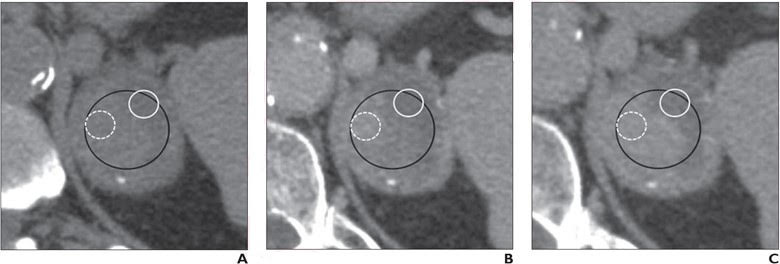Study Finds Adrenal-Protocol CT Limited for Heterogeneous Nodule Evaluation
Images

Adrenal-protocol CT has limited utility in the evaluation of heterogeneous adrenal nodules, according to a study published published in the American Journal of Roentgenology (AJR).
“Adrenal-protocol CT has poor diagnostic performance for distinguishing adenomas from non-adenomas among heterogeneous adrenal nodules, regardless of the method used for ROI placement,” clarified Michael T. Corwin, MD, from the University of California Davis Medical Center in Sacramento.
The manuscript included 164 patients (mean age, 59.1 years; 61 men, 103 women) from seven institutions, with a total of 164 heterogeneous adrenal nodules evaluated by adrenal-protocol CT (all nodules had an available pathologic reference standard). At each institution, a single investigator evaluated CT images, and ROIs were placed on portal venous phase images via four ROI methods: standard, single large in nodule center; high, single on nodule’s highest-attenuation area; low, single on nodule’s lowest-attenuation; average: mean of three ROIs on nodule’s superior, middle, and inferior thirds using the standard approach. After placing ROIs in identical locations on unenhanced and delayed phases, absolute washout was determined for all methods.
Ultimately, the authors concluded that adrenal-protocol CT had poor diagnostic performance (sensitivity, 57–68%; specificity, 51–85%) for distinguishing adenomas from non-adenomas among heterogeneous adrenal nodules, regardless of the method used for ROI placement.
Related Articles
Citation
. Study Finds Adrenal-Protocol CT Limited for Heterogeneous Nodule Evaluation. Appl Radiol.
March 1, 2024